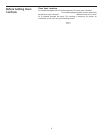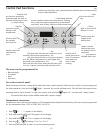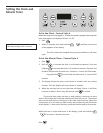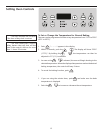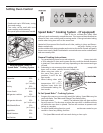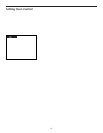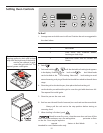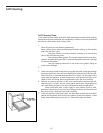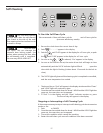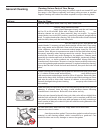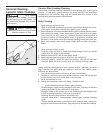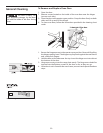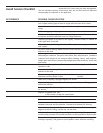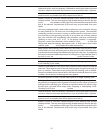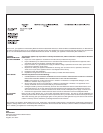
23
Drip bowls are pitting or rusting.
Drip bowls turning color or distorted.
*Oven control beeps continuously with
no indicator lights flashing. (If model
is equipped with a display, F1 or F3 will
show.)
Poor baking results.
Self-cleaning cycle does not work.
Soil not completely removed after self-
cleaning cycle.
Flames inside oven or smoking from
vent.
Drip bowls are pitting or rusting.
Drip bowls turning color or distorted.
Foods with acids, such as tomatoes, if allowed to stand in/on bowls will cause
corrosion. Remove and wash drip bowls as soon as possible after a spillover
Normal environment. Houses along sea coast are exposed to salt air. Protect
bowls as much as possible from direct exposure to salt air.
Bottom surface of cookware extends beyond surface elements and touches
cooktop surface. This can cause high enough temperatures to discolor the drip
bowls. DO NOT use cookware of this type. Pan sizes should be matched to the
size of the element. Replacement drip bowls may be purchased from your
dealer.
This oven is equipped with a state of the art electronic oven controller. Among
its many features is a full time oven circuit diagnostics system. The controller
constantly monitors its internal circuitry as well as several crucial oven circuits
to insure they are all operating correctly. If at any time one of these systems
fails, the controller will immediately stop operation, and beep continuously
(flashing an error code of F1 or F3* in the display window, if equipped).
Electronic control has detected a fault condition. Push CANCEL to clear the
display and stop the beeping. Reprogram oven. If fault recurs, record fault
number, push CANCEL and contact an authorized servicer.
Many factors affect baking results. Make sure the proper rack position is used.
Center food in the oven and space pans to allow air to circulate. Allow the oven
to preheat to the set temperature before placing food in the oven. Try adjusting
the recipe's recommended temperature or baking time. If you feel the oven is
too hot or cool, see Adjusting Oven Temperature in this Owner's Guide.
Control(s) not set properly. Follow instructions under Oven Cleaning.
Self-cleaning cycle was interrupted. Follow steps under "Stopping or Interrupting
a Self-Cleaning Cycle" under Oven Cleaning.
Failure to clean bottom, front top of oven, frame of oven or door area outside
oven seal. These areas are not in the self-cleaning area, but get hot enough to
burn on residue. Clean these areas before the self-cleaning cycle is started.
Burned-on residue can be cleaned with a stiff nylon brush and water or a nylon
scrubber. Be careful not to damage the oven gasket.
Excessive spillovers in oven. Set self-clean cycle for a longer cleaning time.
Excessive spillovers in oven. This is normal, especially for high oven temperatures,
pie spillovers or large amounts of grease on bottom of oven. Wipe up excessive
spillovers before starting cycle. If flames or excessive smoke are present, stop
the self-clean cycle and follow steps under "Stopping or Interrupting a Self-
Cleaning Cycle" in the Oven Cleaning section.
Foods with acids, such as tomatoes, if allowed to stand in/on bowls will cause
corrosion. Remove and wash drip bowls as soon as possible after a spillover
Normal environment. Houses along sea coast are exposed to salt air. Protect
bowls as much as possible from direct exposure to salt air.
Bottom surface of cookware extends beyond surface elements and touches
cooktop surface. This can cause high enough temperatures to discolor the drip
bowls. DO NOT use cookware of this type. Pan sizes should be matched to the
size of the element. Replacement drip bowls may be purchased from your
dealer.



